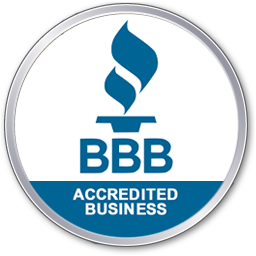Key Takeaways
- A Phase 1 Environmental Site Assessment (ESA) is an inspection of a property and its environmental conditions to ensure it is safe, compliant with regulations, and accurately valued.
- During a Phase 1 ESA, an environmental professional will visually inspect the site, review relevant records, monitor current operations, survey surrounding properties, and interview past property owners and local officials.
- The price of a Phase 1 ESA can be impacted by a property’s size, location, features, and history.
- If the environmental professional suspects the presence of hazardous substances on the property, a Phase 1 ESA can require more testing or progress to a Phase 2 assessment, demanding more time and money.
Understanding Phase 1 Environmental Site Assessments
When you buy a new property, a Phase 1 Environmental Site Assessment is essential for protecting your investment and ensuring the property is in its best shape. However, you want to ensure that you aren’t breaking the bank and are receiving a quality assessment at a reasonable cost. Knowing what to expect from a Phase 1 Environmental Site Assessment will ensure you have realistic expectations for the process and get the best possible price.
What Is a Phase 1 Environmental Site Assessment?
A Phase 1 Environmental Site Assessment (ESA) is an assessment and inspection of a specific property to uncover any environmental conditions that could impact its value or legality. A Phase 1 ESA is a comprehensive process with several steps that can discover previous issues like the presence of chemical or hazardous materials, poor soil quality, and more.
During a Phase 1 ESA, a team of professionals will:
- Perform a visual site inspection
- Review historical and environmental records from the property
- Conduct interviews with previous property owners and local officials
- Review the site’s current operation
- Perform a site survey of the surrounding properties
After following the above steps, the environmental consultant in charge of the assessment will provide a completed phase 1 ESA report according to the American Society for Testing and Materials (ASTM) standards. This report will highlight their professional findings, cover any pollutants or issues discovered, and recommend any next steps you should take.
Why Is a Phase 1 Environmental Site Assessment Important?
A Phase 1 ESA is a vital step after purchasing a property. First, the process protects the buyer and the seller from liability to ensure that no issues will affect the value or legality of the property later on down the road.
Some of the common concerns discovered during an ESA include:
- Underground storage tanks
- Former gas stations
- Automotive repair facilities
- Illegal dumping
- Dry cleaners
- Improperly stored drums or containers
- Contaminated soil
If a property served any of the above purposes in the past, it is crucial for a buyer or new property owner to be aware of the potential impact on the soil and the ability to develop the land for future uses. In many cases, a bank will require a Phase 1 ESA before financing the purchase of a property. Environmental contamination issues can also leave the new property owner liable to legal action, even if they did not cause them. Altogether, this assessment is valuable for all parties.
A Phase 1 ESA also allows the property owner to address any issues. By uncovering current or historical problems with the land, the landowner can find the proper support to fix them and ensure the land is fit for use. If an expert uncovers any potential issues, a Phase 1 ESA will lead into a Phase 2 ESA, where an environmental expert will perform a more thorough inspection and recommend the next steps for addressing the concerns.
Factors that Influence a Phase 1 Environmental Site Assessment Cost
Every property is different, and these differences have an important impact on the cost of a Phase 1 ESA. The factors influencing the price of a Phase 1 Environmental Site Assessment boil down to how much time experts need to gather enough information about your property.
This consideration breaks down into about four main factors.
Property Size
One of the most significant influences on price is property size. The size and acreage of your property will influence how much time it will take to survey the site and how much information your consultant needs to gather to complete the assessment.
Simply put, a larger property means an expert will have more ground to cover as they assess the site area. Larger properties will cost more due to the time needed to gather all the necessary information.
Property Location
The property location is another important factor for two reasons. First, different states have different expectations and requirements for Phase 1 ESAs, which affects how much time your consultant needs to spend gathering information.
At the same time, the location determines how far your consultant has to travel to complete your assessment—this distance will play an important role in the cost. If your consultant has to travel a long distance or drive down a long dirt road to get to your property, it will add time to the process and add to the cost.
At Alpha Environmental, we will perform site assessments throughout all of Oregon and parts of Southern Washington, and we are willing to travel up to a few hours for assessments. Travel time is one of the factors we consider in our pricing.
Site Features
Similar to property size and location, the features of the property also matter a great deal to the effort that goes into conducting an assessment. For example, a site with no structures and simple terrain will be easier to assess than a site with hilly terrain and multiple buildings and structures.
Of course, this is only a generalization. Although some properties seem easier to assess because of limited features, there may be cases where available documentation and site location may make the process more difficult.
A situation like this could lead to a simple-seeming property being more costly than you would think. Therefore, it’s important to remember that your expert will consider all these factors together when providing a cost estimate.
Site History
The historical use of a piece of land is a significant factor in the cost of a Phase 1 ESA. The type of history and the record-keeping of the history are both important. For example, a property with a history of industrial use may cost more than a site with a history of commercial use, especially if the industry involved more environmental hazards.
Properties with longer and more complicated histories will also lead to a higher cost for an assessment. Primarily, if a site has a long history of use, there can be hundreds of pages of files, and sorting through it all will take some time and effort.
At the same time, if this history is difficult to gather because of limited documentation and records, your environmental consultant will have to work harder to discover the history behind your property. Each of these factors will influence the cost.
Regulatory Requirements and Compliance
In order to stay compliant with various federal, state, and local environmental regulations, Phase 1 ESAs may increase in complexity and cost. Some specific environmental concerns require additional testing and investigations to guarantee compliance with the acts and standards set by the Environmental Protection Agency (EPA), such as the Comprehensive Environmental Response, Compensation and Liability Act (CERCLA) and All Appropriate Inquiries (AAI) standards.
CERCLA requires an environmental professional with sufficient training, schooling, and licensure to complete your Phase 1 ESA. If the qualified professional finds the release or threatened release of hazardous substances during the assessment, they must report that information to the governing body and provide their opinion on if and how additional investigations like a Phase 2 ESA should be executed.
The environmental professional may perform additional tests to clear up ecological concerns on the spot. Groundwater and surface-level soil sampling is a great way to get more accurate readings of the property’s hazards without performing an entire Phase 2 ESA that requires complex equipment like drill rigs. Depending on the amount of labor and tools needed, this extra work can increase the price of the Phase 1 ESA or push it into a Phase 2 ESA entirely.
How Much Does a Phase 1 Environmental Site Assessment Cost?
As you can see, there is no clear-cut answer to how much a Phase 1 ESA costs, as the price depends on a wide range of factors. Larger properties with more complicated histories will cost more, while smaller properties that take less time will cost less.
Remember that cost is different than value. It is better to pay slightly more for an assessment to ensure that an expert is responsible for conducting it. After all, a poorly conducted Phase 1 ESA can lead to problems later on down the road, especially if the assessment fails to uncover any environmental hazards that need to be addressed.
With our services at Alpha Environmental, our expertise and experience will provide you with the peace of mind that our assessment is detailed and done properly. Our assessment never cuts any corners, ensuring we find as much detail about the property as possible to save you from future headaches and save you money down the line.
If experts find issues with your property during the site assessment, then you can expect to pay a higher cost for a Phase 2 ESA in order to address them. These assessments generally involve more thorough inspections, like soil testing and water sampling. Your environmental expert will tell you after the Phase 1 ESA whether you should perform a more intensive Phase 2 assessment based on their findings.
How To Reduce the Cost of a Phase 1 Environmental Site Assessment
Just as a variety of factors can increase the cost of a Phase 1 ESA, there are a few that can reduce it as well. Sometimes, providers offer discounts based on the client and the situation. For example, a provider may offer a discount for assessing multiple properties in close proximity at one time.
For example, at Alpha Environmental, we occasionally offer discounts on a case-by-case basis to reduce the price for companies that receive multiple assessments simultaneously.
Of course, the best way to reduce the cost of an assessment is to choose a trustworthy and experienced provider. However, be aware that cheaper is not always better. If a price looks too good to be true, it will likely lead to problems in the long run. Often, companies that offer the absolute cheapest prices are not as detailed in their process and miss important information that can open the owner up to liability.
Paying for an expert site assessment now will be much cheaper than paying for the future damages, liabilities, and legal fees that can come from an errant report. Choosing the right provider will ensure the assessment gets done correctly, eliminating risk and helping save money down the road.
Do I Need a Phase 2 Environmental Site Assessment?
Some Phase 1 ESAs turn into Phase 2 ESAs if the environmental professional conducting the assessment predicts the presence of hazardous substances and needs more information on the site’s contamination history.
Although Phase 2 assessments are often beneficial, they require more money and time than a Phase 1 ESA. Therefore, Phase 2 ESAs should only be initiated when the property’s conditions suggest current or past releases of hazardous substances or petroleum products into the environment.
What Happens in a Phase 2 ESA?
Phase 2 ESAs entail gathering soil samples to check for metal or chemical contamination. Depending on the site’s setup, a hydraulic push, hand auger, drill rig, or backhoe can be used to perform this high-level sampling. Surface and groundwater samples may also be included in Phase II Environmental reports.
Some of the most common Phase 2 ESA examinations are:
- Water and surface-level dirt sampling
- Below-surface soil drilling and sampling
- Installation of a groundwater monitoring well
- Drum sampling
- Sampling of catch basins, floor drains, and dry wells
- Geophysical examination of buried drums and tanks
- Underground storage tank testing
After collection, samples from Phase 2 ESAs are sent to an accredited facility and examined in compliance with local, state, and federal laws. These thorough tests can uncover different contaminants that may have been missed during a Phase 1 ESA.
What Hazardous Substances Can Be Found During a Phase 2 ESA?
Phase 2 ESAs can provide additional insight into certain hazards in specific areas of the property. Phase 2 assessments commonly find the following contaminants:
- Lead-based paint
- Groundwater contaminants
- Asbestos-containing material (ACM)
- Mold
- PCB ballasts
- Fluorescent lamps
A Phase 2 ESA can identify hazardous substances on the site, assess their quantities, and explain when and how the contaminants arrived. The Phase 2 ESA report will also explain the investigative activities carried out, detailing the soil borings performed and comparing soil and groundwater analytical results to state standards.
Not all properties will need a Phase 2 ESA—in many cases, a Phase 1 assessment can provide sufficient data. Still, if you are unsure if you need a Phase 2 ESA, be sure to contact a trusted environmental services team for guidance.
Get the Most Value Out of Your Phase 1 Environmental Site Assessment
It’s important to choose an experienced company that will ensure your assessment gets done right. For a reliable provider of a Phase 1 ESA at the right price, turn to Alpha Environmental. Our team of experts will follow ASTM standards to perform a thorough and detailed inspection that saves you money and peace of mind down the line.
With 21 years of experience serving Portland, we know how to handle the job properly. Contact us today to learn more about what you can expect from a phase 1 environmental site assessment. Give us a call at (503) 292-5346 to get started with a Phase 1 ESA for your property.




